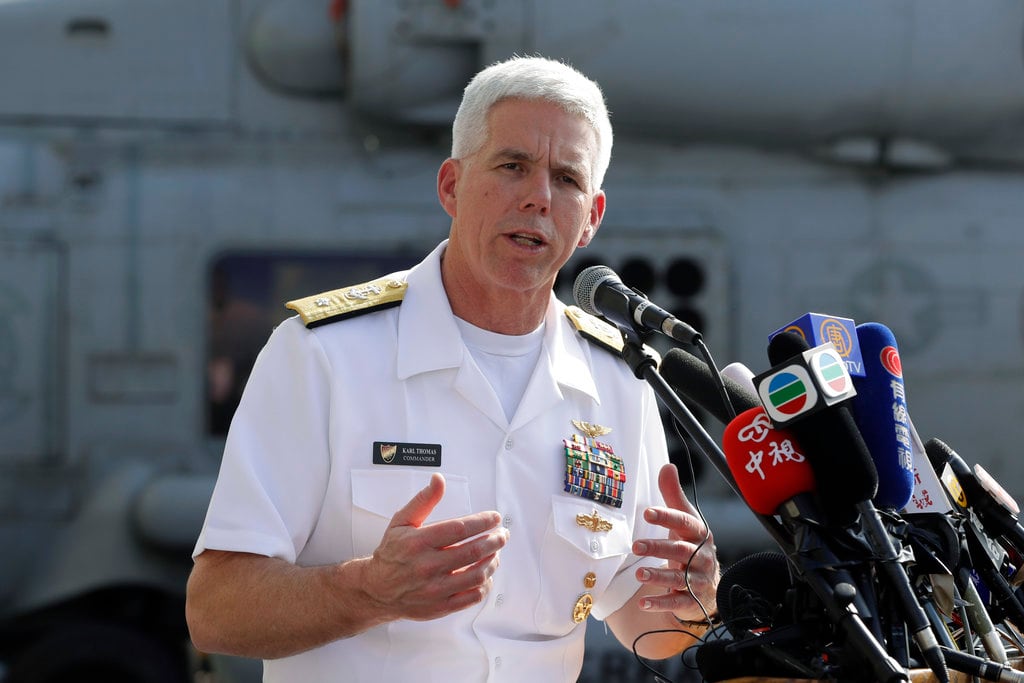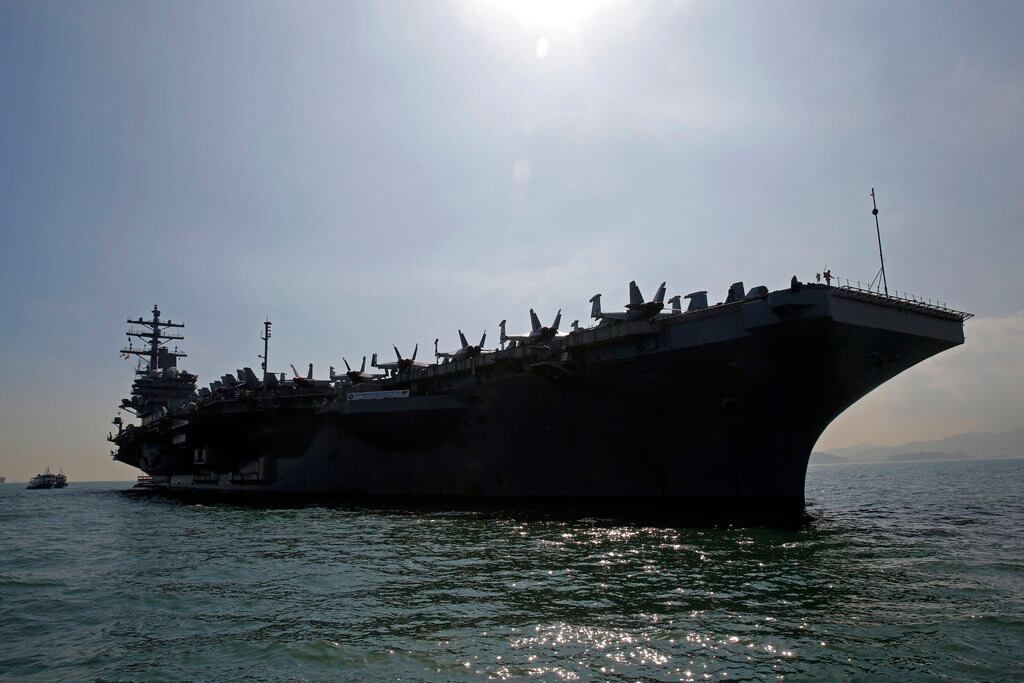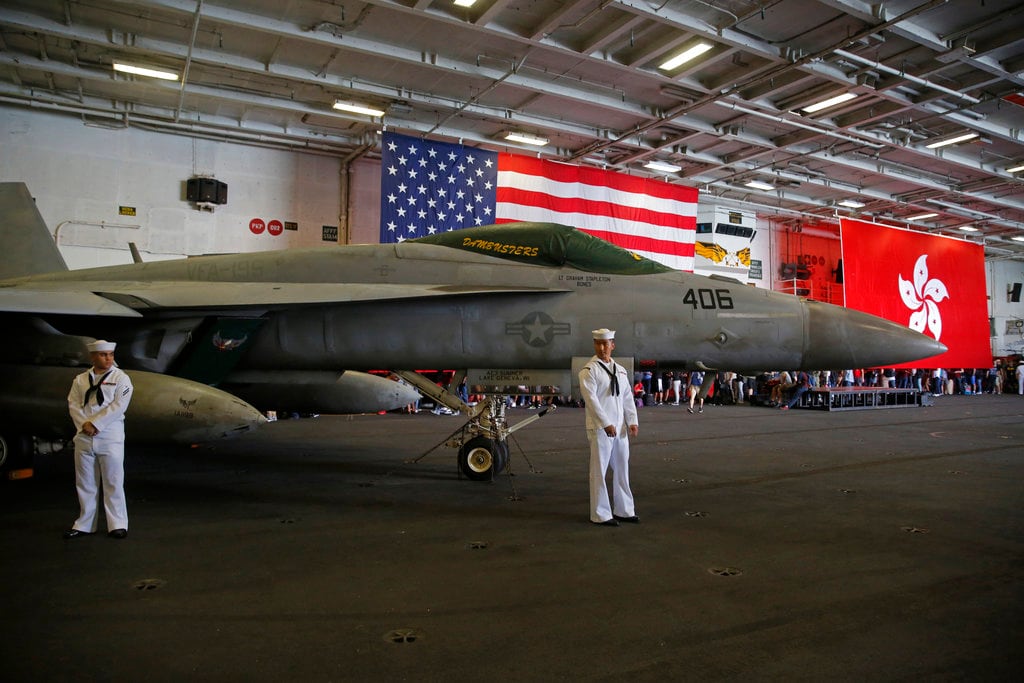HONG KONG — A U.S. aircraft carrier docked in Hong Kong on Wednesday, days after a pair of American B-52 bombers flew over the disputed South China Sea.
The arrival of the carrier Ronald Reagan and its strike group in the Asian financial hub is being seen as a friendly gesture ahead of a planned meeting later this month between President Donald Trump and Chinese leader Xi Jinping. That will mark the first time they’ve sat down together since the start of a bitter trade war and amid tensions over the South China Sea.
China has demanded the U.S. cease military activity of all kind near its South China Sea island claims that it has been rapidly fortifying. The U.S. says it takes no stance on sovereignty claims, but will continue to sail and operate wherever international law permits.
In late September, a Chinese destroyer came close to the guided-missile destroyer Decatur in the South China Sea in what the U.S. Navy called an “unsafe and unprofessional maneuver.”

Asked to comment Wednesday on the incident, Rear Adm. Karl O. Thomas, commander of Carrier Strike Group 5, said the “vast majority of our interactions out there at sea are very professional.”
“That was a rare, unusual occurrence,” Thomas told reporters at a ship-board news conference. “In that particular case, the ship made some aggressive, continuing aggressive maneuvers and our ship warned them and had to maneuver to prevent a collision. It was unfortunate and I’d like to see that not happen again.”
The Navy said in a statement that during the Reagan’s visit, interactions will take place with Hong Kong citizens through sports, community relations projects and tours of the carrier. More than 4,400 men and women are usually aboard the ship.
RELATED

The Reagan’s visit comes two months after China rejected a similar request by another U.S. Navy ship amid a spike in tensions between the countries' militaries.
And while the port call is seen as a positive for bilateral relations, other events this week point to the ongoing rivalry between the sides.
U.S. Pacific Air Forces said two B-52 bombers flew over the South China Sea on Monday, calling it a “routine training mission.”
The B-52H Stratofortress bombers departed Andersen Air Force Base in Guam as part of the U.S. Indo-Pacific Command’s Continuous Bomber Presence operations that began in 2004, Pacific Air Forces said in a statement Wednesday.
“This recent mission is consistent with international law and United States' long-standing commitment to a free and open Indo-Pacific,” the statement said.

Also this week, the Washington-based Center for Strategic and International Studies, or CSIS, reported that China had installed a new platform on Bombay Reef, a remote undeveloped feature in the Chinese-controlled Paracel Islands in the South China Sea. Vietnam and Taiwan also claim the reef.
The platform appears to be topped with a radome and solar panels, and its strategic location makes it likely it is intended to extend China’s radar or signals intelligence collection in the area, the report said. Bombay Reef already has a lighthouse to serve as an aid to navigation.
Unlike China’s large man-made islands created by piling sand on top of coral reefs, installing the modestly sized Bombay Reef platform did not require inflicting major environmental damage, CSIS said. However, that illustrates how easily China could expand its footprint to other features such as Scarborough Shoal, which it seized from the Philippines in 2012, it added.

Compared to dredging and reclamation, the installation of a modest platform would be “harder to prevent at the time and more difficult to rally international condemnation against after the fact,” the report said.
Chinese Foreign Ministry spokesman Geng Shuang said Wednesday at a daily news briefing in Beijing that he had no information about the details of the report, while reasserting China’s claims to the island group it calls Xisha.
“The Paracel Islands are China’s territory. This is indisputable. China’s construction on its own territory is beyond reproach,” Geng said.
Bodeen reported from Beijing.




